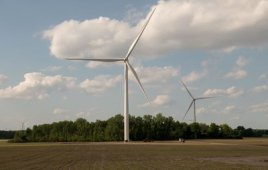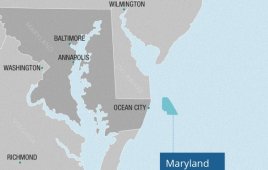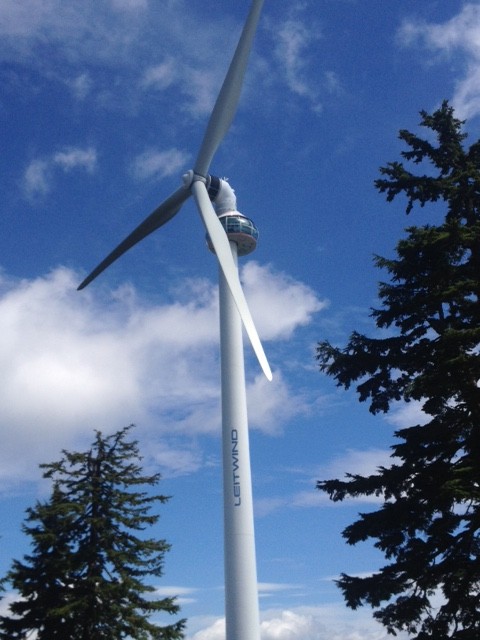
Vancouver, B.C.’s “Eye of the Wind” is the world’s first wind turbine with a glass viewPOD at the top of the tower, providing visitors with a 360-degree view of the surrounding mountains.
It’s not difficult to find information on the adverse affects of wind turbines on wildlife. Despite mandatory environmental impact studies and improvements in avian deterrents, I still don’t think enough safeguards are in place for such species at most wind farms. So it was a nice surprise to visit a turbine that’s created a home for one local animal facing extinction.
Thoughts of nature and wildlife were top of mind when I headed up British Columbia’s scenic Grouse Mountain last week by SkyRide, North America’s longest aerial tramway. With a summit altitude of 4,100 ft. Grouse Mountain got its name from a group of hikers back in 1894 who reportedly encountered a “blue grouse” bird on the alpine slopes. Today, Grouse Mountain is one of Vancouver’s most visited attractions with more than a million guests every year.
With ski slopes in the winter and ecological and ziplining adventures in the summer, the mountain even offers a wilderness sanctuary where endangered animals including bears, owls, and raptors are kept safe and provide educational opportunities for mountain visitors. Grouse is also home to a single 1.5-MW wind turbine, which is exactly where I was headed for a tour.
Weighing more than 250 tons and spanning 65 meters from base to tower top, the turbine’s most notable feature is its one-of-a-kind, panoramic viewPOD that’s accessible by elevator. Aptly referred to as “The Eye of the Wind,” the glass pod provides visitors a close-up view of the three 37.4-m blades and a 360-degree view of the surrounding mountain landscape.
The privately funded, gearless direct-drive Leitwind turbine was inaugurated back in 2010, just prior to the start of the 2010 Olympics in Vancouver, and it’s still the only one in the world that lets visitors stand in a glass enclosure three meters below the turbine hub. The design was notably recognized in 2011 at the Consulting Engineers of British Columbia’s “Awards for Engineering Excellence.”
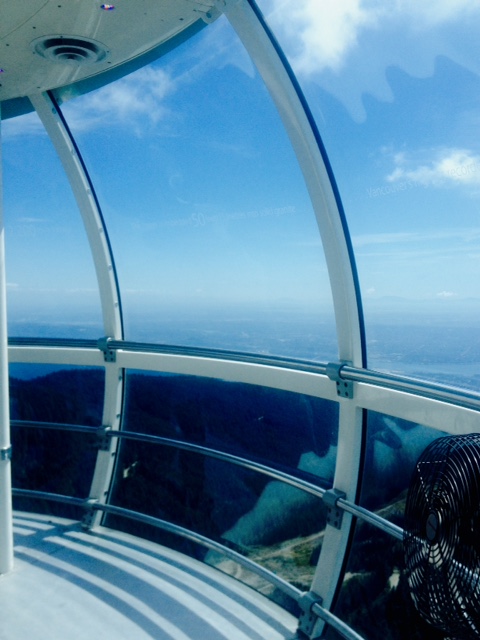
An enclosed elevator inside the tower takes turbine visitors 58-m up to a glass-enclosed viewing deck.
All of this is very impressive and breathtaking (it’s worth the price of admission if you ever find yourself in the Vancouver vicinity), but I was mostly intrigued by one thing: the foundation. Once atop the mountain it’s still necessary to hike or take a ski lift up another 400 ft. to the base of the wind turbine. The turbine’s foundation takes advantage of the surrounding bedrock and is comprised of a 2-m thick by 8-m wide octagonal concrete base, with anchors imbedded up to 15-m into the granite rock.
The rocky base has done more than just secure the tower. It’s also provided a nice home for one of the mountain’s smallest residents, the pika. Members of order Lagomorpha, which includes rabbits and hares, the American Pika is common to western North America and normally found above the tree line in the alpine. But they are also known to adapt to areas at elevation where large rock fields are created, such as near Grouse Mountain’s Eye of the Wind.
Despite the sustainable, clean-air benefits of wind power—the blades were barely turning when I visited. But on a good day, it’s supposed to generate up to 25% of the resort’s power. And how often do you hear of a wind turbine creating a safe home for nearby wildlife inhabitants?
Pikas are going extinct from the rise in temperature largely caused by the burning of fossil fuels and greenhouse gases, making wind-power an even more fitting addition to the mountain. According to the National Wildlife Federation, pikas have already disappeared from over one-third of their previously known habitat in places such as Oregon and Nevada, and they are currently up for consideration and protection under the Endangered Species Act.
Of course, this doesn’t solve potential threats to birds or bats but it made the tour of this panoramic turbine more impressive. In fact, my tour guide, a program 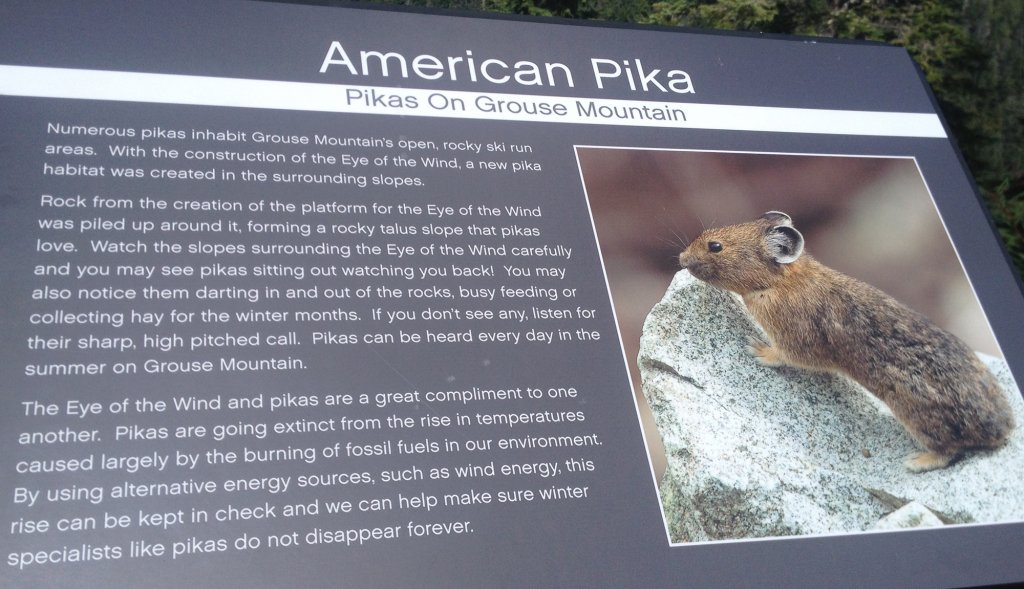 director on the mountain for almost 15 years, said he had never heard of any avian deaths from the turbine. He credited the extensive environmental siting studies pre-turbine construction for insight on the mountain’s ecology and wildlife—some of which you can learn about if you take one of Grouse’s guided hikes, which is next on my to-do list.
director on the mountain for almost 15 years, said he had never heard of any avian deaths from the turbine. He credited the extensive environmental siting studies pre-turbine construction for insight on the mountain’s ecology and wildlife—some of which you can learn about if you take one of Grouse’s guided hikes, which is next on my to-do list.
Grouse Mountain is dedicated to becoming a global leader in preserving at-risk flora and fauna and in conservation education. Although it’s slowly moving in the right direction, it would be admirable if other industries could promise the same to wildlife.
Check out this article for information on some of the latest innovations to protect birds and bats from wind turbines.
Filed Under: Uncategorized

